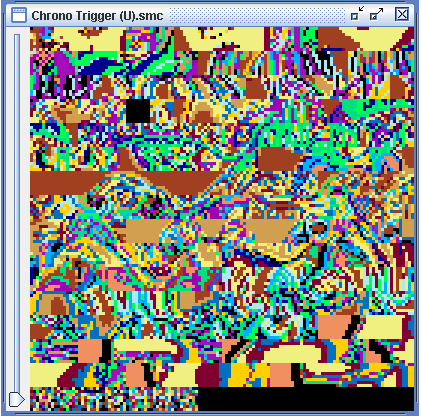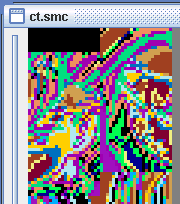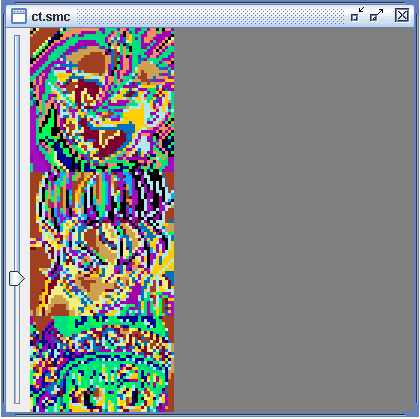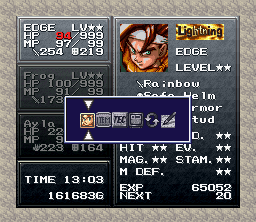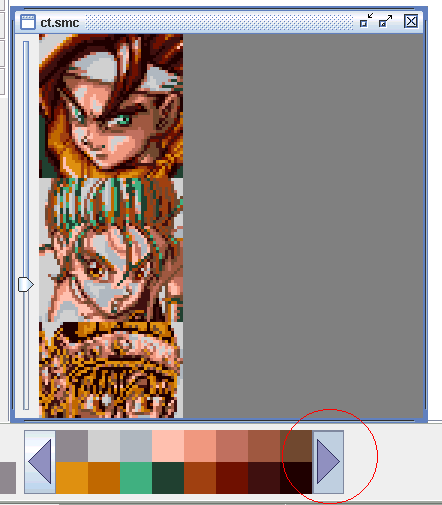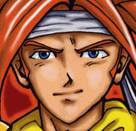Changing the status menu portraits
Tools Needed
As with most graphic editing, a Tile editor is required. In this tutorial, we are going to use TileMolester ( http://www.stud.ntnu.no/~kenth/tm/ ), which requires Java runtimes. To get TileMolester, simply hit up http://www.stud.ntnu.no/~kenth/tm/#DOWNLOADS and get the TileMolester [Bin]. If you don't have the Java runtimes required, go to http://java.sun.com/j2se/1.5.0/download.jsp and download the JRE 5.0 Update 1, not the JDK program, as the JRE allows average users to run Java programs while JDK is actually a tool for creating them.
Now, after the Java runtimes are installed, go to the folder where TM is located and simply run tm.jar.
If you have WinRAR installed, or another program that uses .jar files for something other than Java, it gets a bit tricker. If you know how, reset the .jar file association to the Java runtimes. If not, you can simply run the program with a DOS command line. To do that,
1. Open MS-DOS
2. Enter the command ' cd (directory/folder where TileMolester is installed, like c:\tilemolester) '
3. Enter the command ' java -jar (your TM filename, such as tm.jar) '.
You can also create a batch file with step three's command in it in the TileMolester directory, or download one here (remember to put it in the TileMolester directory). Now that everything's installed, let us get down to business.
Finding Portraits
Portraits, like anything else in the Chrono Trigger ROM, are stored at a certain offset within the game. But first, load the Chrono Trigger ROM within TileMolester. A window should pop up with garbled graphics and pixels. Now, we need to navigate to the correct offsets to find the portraits. This varies if your ROM is headered or unheadered (if you've ever edited it with Temporal Flux, it is unheadered, whereas if you just downloaded it off the internet, it is headered). Use these addresses accordingly:
Unheadered: 3F1D80
Headered: 3F1F80
This process should appear as so:
Now click OK, and the garbled graphics will scroll to the new address in the ROM. Scroll up somewhat and you should see this:
These are the portraits, albeit with the wrong palette (the colors at the bottom of the program). Before we get to editing, we need to fix these portraits so they display correct. Firstly, go to Image > Canvas Size, and make it 6 x 16. Now, notice that they're still a little out of order:
Fix this by hitting the Tile Forward button ![]() until it looks correct:
until it looks correct:
Notice how the portraits are not slightly displaced. We're ready to start editing. You now need to decide which portrait you would like to edit this time around, since we can only do one at a time. In this case, we're going to edit Crono's picture. Now, open ZSNES or SNES9X and play Chrono Trigger until you can open the menu screen that displays the portraits. Make sure Crono's portrait is onscreen, and then make a savestate. Once again, be sure that your savestate is made while viewing this screen:
Now, back in TileMolester, go to Palette > Import From > Another File in the menu. Find the savestate you just made and open it. This has ported all the palette data from your savestate into TileMolester. Below, where the colors are, press the large arrows until Crono suddenly looks right. I've highlighted the button you should press, and the result:
Now it's time to find the picture we want to replace Crono. In this tutorial, we're going to replace this strange picture Square gave us with something cooler from one of CuteLucca's fanarts. Now, let's pretend I found this picture:
It's too large for the ROM at the minute; the actual Crono picture in Chrono Trigger is 48x48 pixels, so we're going to have to shrink this down to that size. This can be done with your image editor of choice; if you're stuck with MSPaint, check out Irfanview at http://www.irfanview.com/ . We'll be using Irfanview eventually, too. I resize/resample the picture to this:
Now, recall that Chrono Trigger uses 16-color palettes. We'll have to make this image have only 16 colors. In Irfanview, go to Image > Decrease Color Depth > 16 Colors. The quality should be sacrificed somewhat, but in your own efforts you can fine tune it. I now have this:
We're ready to paste it into TileMolester over Crono's old portrait. Save the file in Irfanview as a bitmap. Now, back in TileMolester, go to Edit > Paste From in the menu and find the bitmap that you just saved. Now, paste it over Crono's old portrait.

